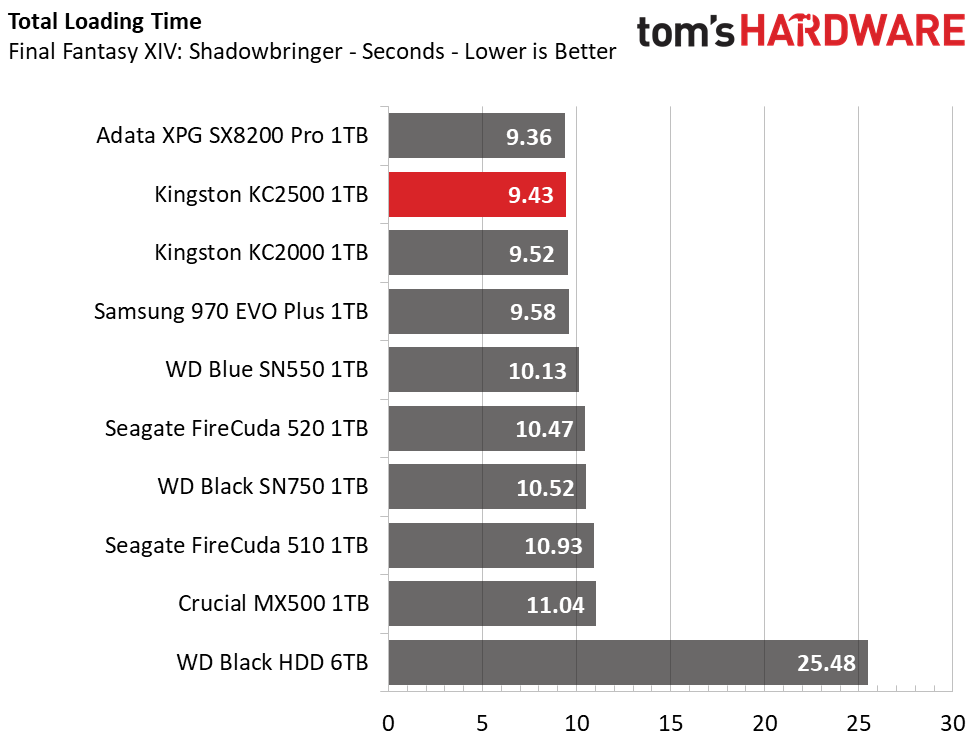Why you can trust Tom's Hardware
Comparison
We pit the Kingston KC2500 against its predecessor, the KC2000, as well as a bunch of mainstream and high-end contenders. We include the Samsung 970 EVO Plus, Adata XPG SX8200 Pro, WD Black SN750, Seagate FireCuda 510, and even the Gen4 FireCuda 520. For a bit of perspective, we also threw in a Crucial MX500, WD Blue SN550, and a WD Black 7,200-RPM HDD for good measure.
Game Scene Loading - Final Fantasy XIV
Final Fantasy XIV Stormbringer free real-world game benchmark that easily and accurately compares game load times without the inaccuracy of using a stopwatch.
With the faster clock rate, Adata’s XPG SX8200 Pro reigns supreme, though by just a fraction of a second difference over multiple game scenes. Kingston’s KC2500 scores second place in total load time, absolutely putting to shame Samsung and proving even more responsive than Gen4 FireCuda 520. When it comes to game load performance, Kingston’s KC2500 is one of the fastest SSDs for the task.
Transfer Rates – DiskBench
We use the DiskBench storage benchmarking tool to test file transfer performance with our own custom blocks of data. Our 50GB data set includes 31,227 files of various types, like pictures, PDFs, and videos. Our 100GB includes 22,579 files with 50GB of them being large movies. We copy the data sets to new folders and then follow-up with a reading test of a newly written 6.5GB zip file and 15GB movie file.



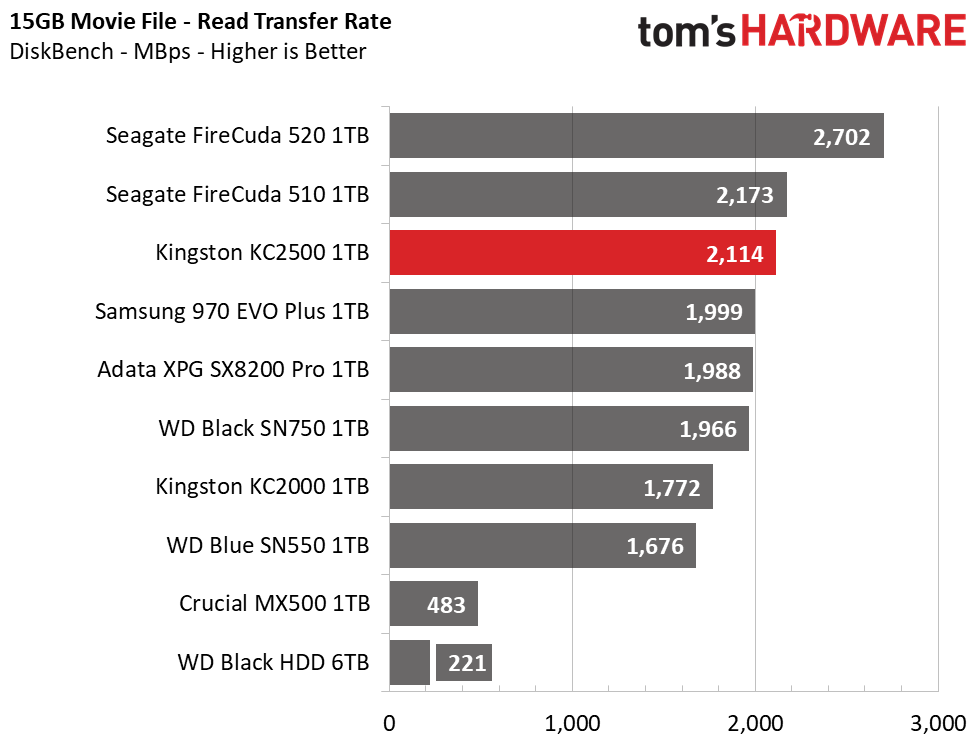
When copying large datasets on the KC2500 and reading back large media files, the new Kingston drive outperformed its predecessor by quite a bit, especially the 100GB file copy where it improved by over 230 MBps. However, while the faster flash speed enables faster performance here, it isn’t enough to keep up with some of the higher performance contenders like the FireCuda 520, 970 EVO Plus, Black SN750, and SX8200 Pro. All of these exceed the KC2500’s copy performance by over 100 MBps.
Read performance has improved quite a bit, too. One of the advantages of the BiCS4 is that it reads a bit quicker than Micron’s 64L flash. Both Seagate’s FireCuda 510 and the KC2500 manage to outperform the Adata SX8200 Pro in our 6.5GB and 15GB file read tests, even with a slower clocked controller.
Trace Testing – PCMark 10 Storage Tests
PCMark 10 is a trace-based benchmark that uses a wide-ranging set of real-world traces from popular applications and common tasks to measure the performance of storage devices. The quick benchmark is more relatable to those who use their PCs lightly, while the full benchmark relates more to power users.
Get Tom's Hardware's best news and in-depth reviews, straight to your inbox.

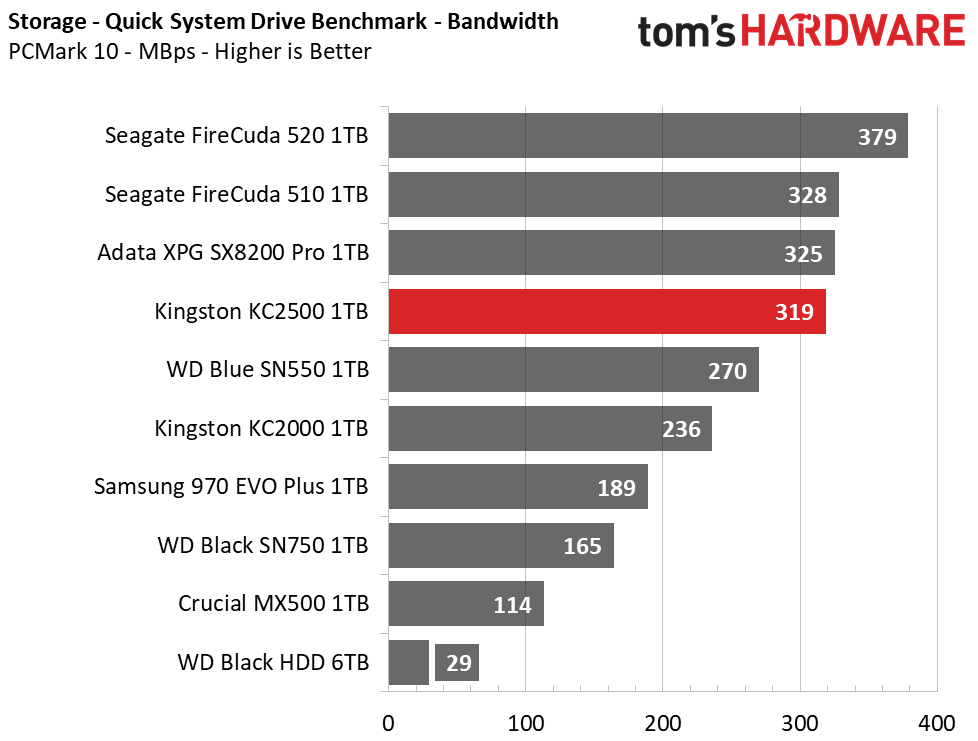


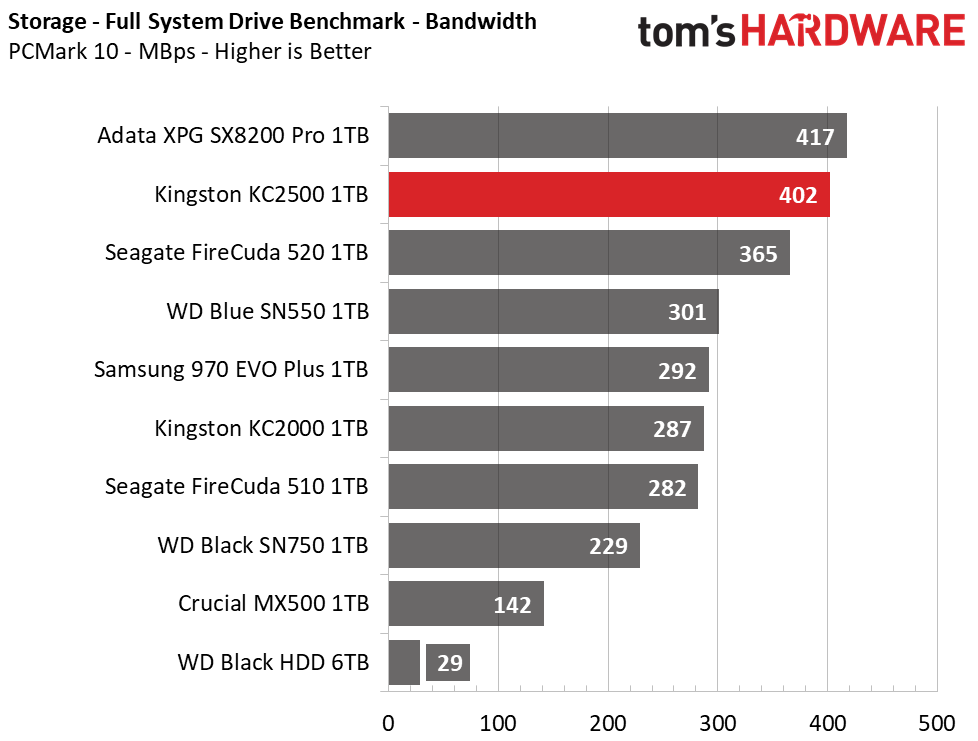
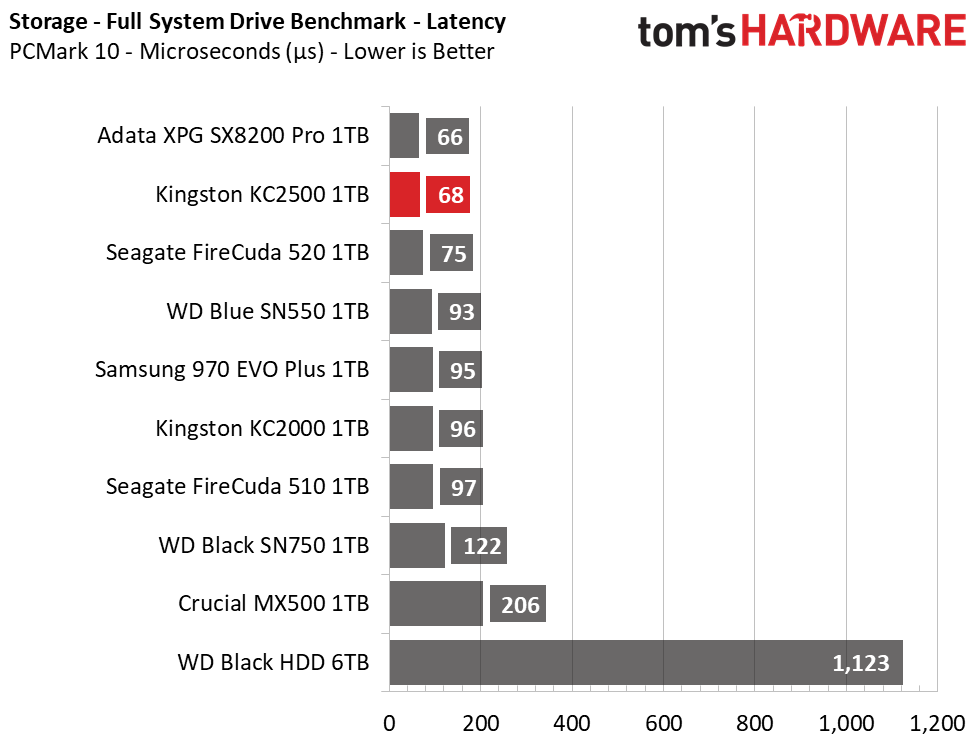
Here it seems that the hybrid TurboWrite SLC cache on the Samsung 970 EVO Plus doesn’t do well with PCMark10’s workloads, and the less responsive WD Black SN750 trails it, too. Contrarily, Kingston’s KC2500 performs very well in both the Quick and Full System Drive benchmarks. While the FireCuda 520 and 510 outscored it in the quick test, the KC2500 dominated both in the much tougher full workloads. Adata’s SX8200 Pro still proves very fast though, and thanks to its overclock and Micron flash, it manages to pull ahead of the KC2500 in both workloads.
Trace Testing – SPECworkstation 3
Like PCMark 10, SPECworkstation 3 is a trace-based benchmark, but it is designed to push the system harder by measuring workstation performance in professional applications.
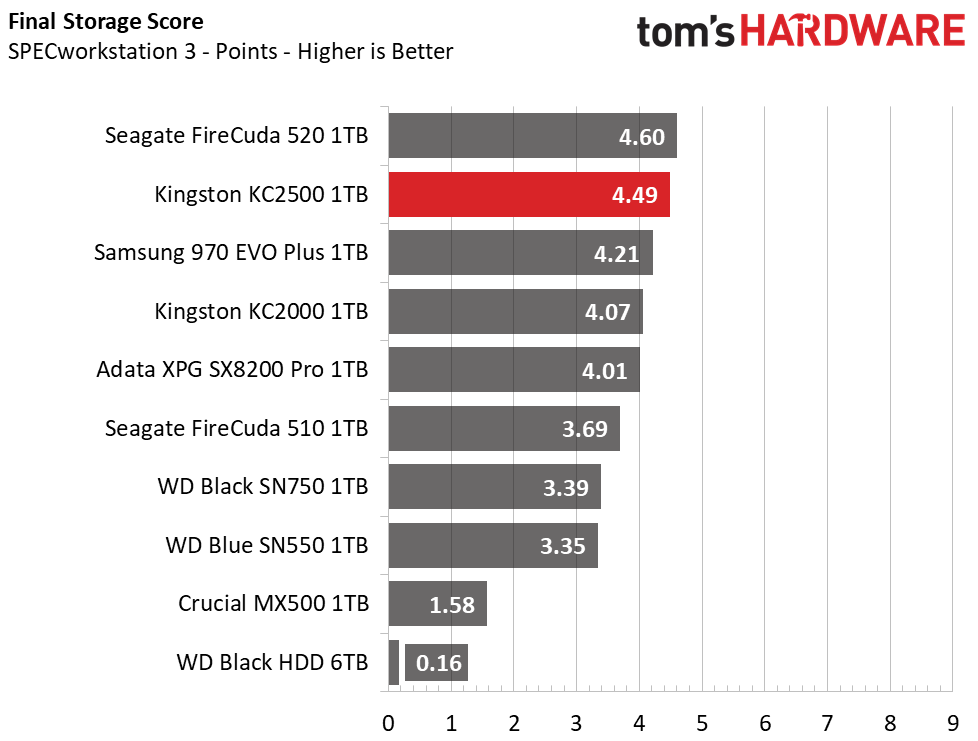
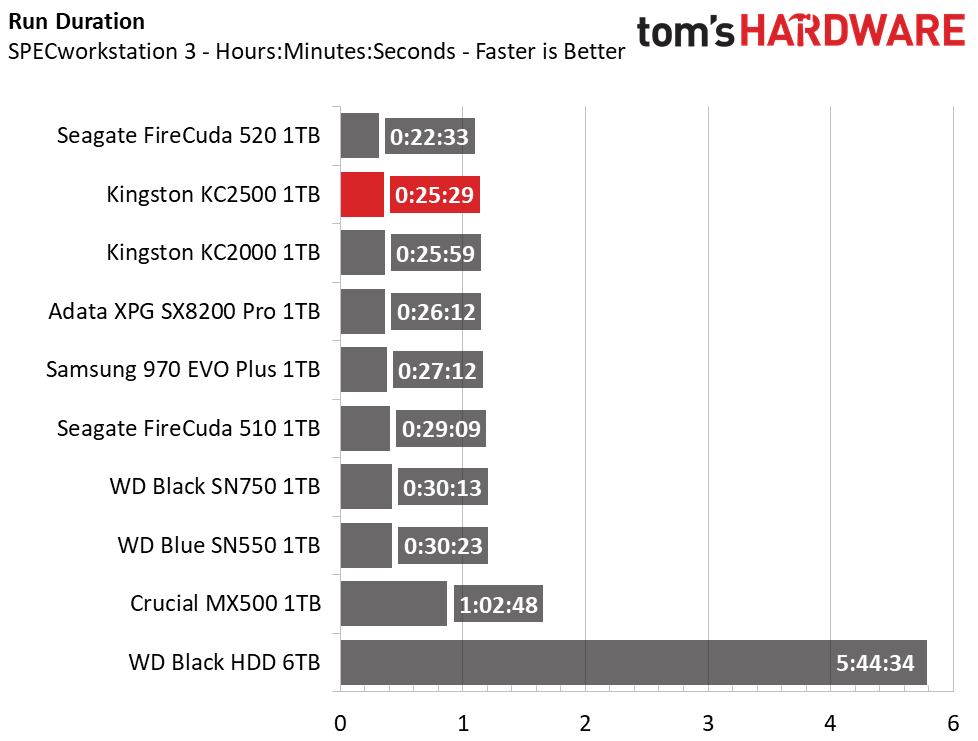

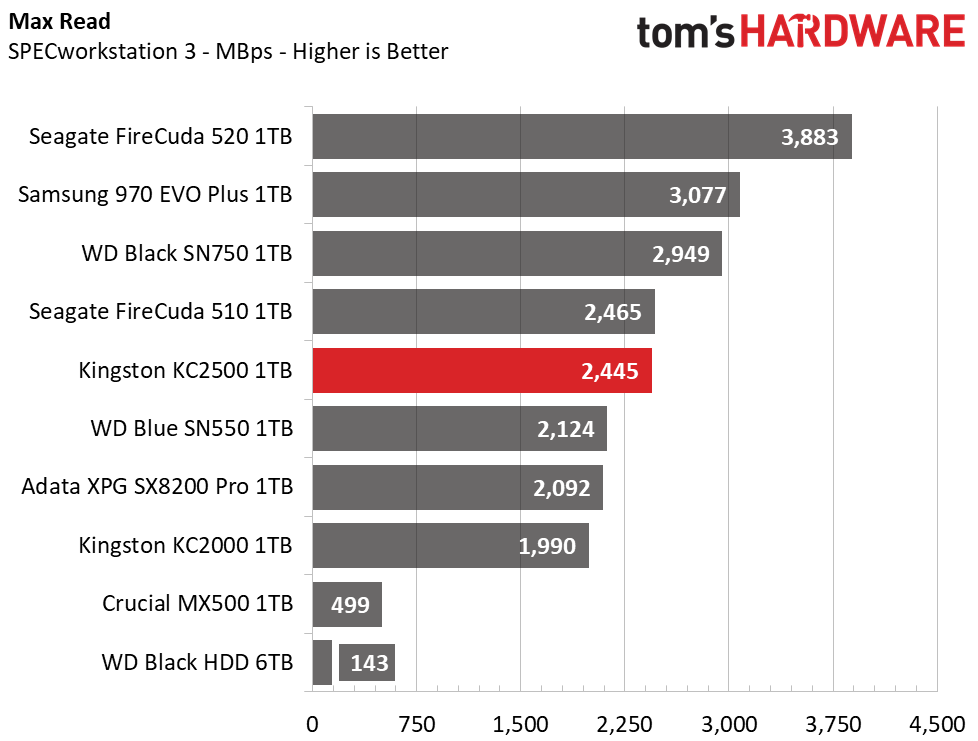

When it comes to workstation and HPC use, Kingston’s KC2500 proves to be one of the best NAND flash choices going. Not only did the KC2500 improve upon the KC2000, but it also jumps ahead of Samsung’s 970 EVO Plus, beating it by a few minutes and just nibbling at the heels of Seagate’s FireCuda 520 due to its faster random responsiveness than the rest. That said, the other SSDs sustained much higher sequential throughput at one point or another during the benchmark runs.
Synthetic Testing - ATTO / iometer
iometer is an advanced and highly configurable storage benchmarking tool while ATTO is a simple and free application that SSD vendors commonly use to assign sequential performance specifications to their products. Both of these tools give us insight into how the device handles different file sizes.
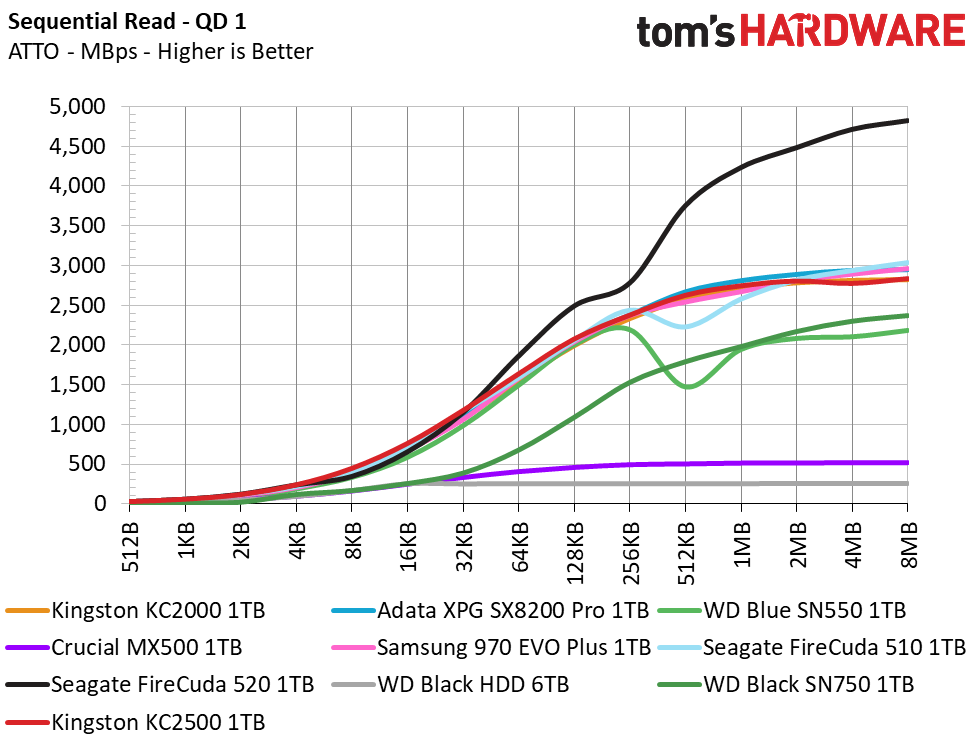


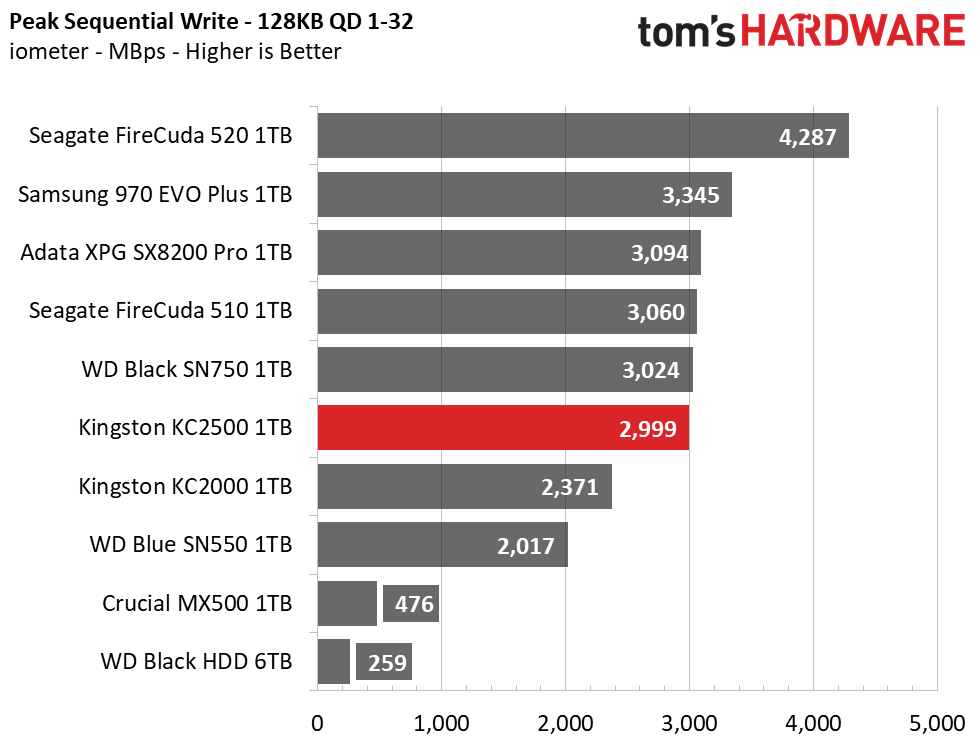
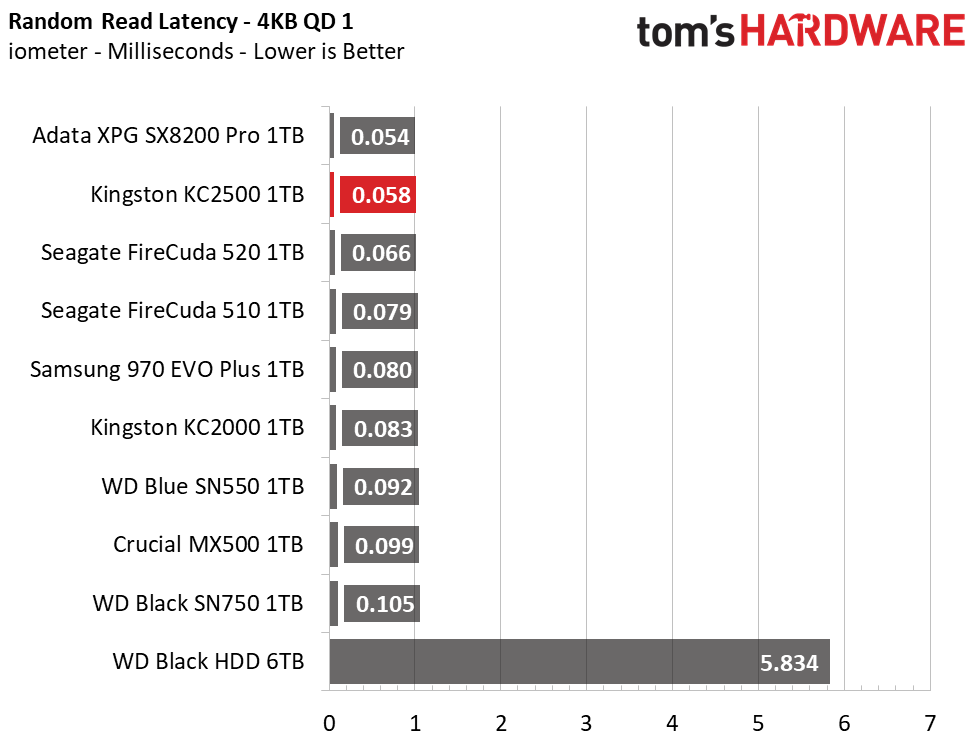
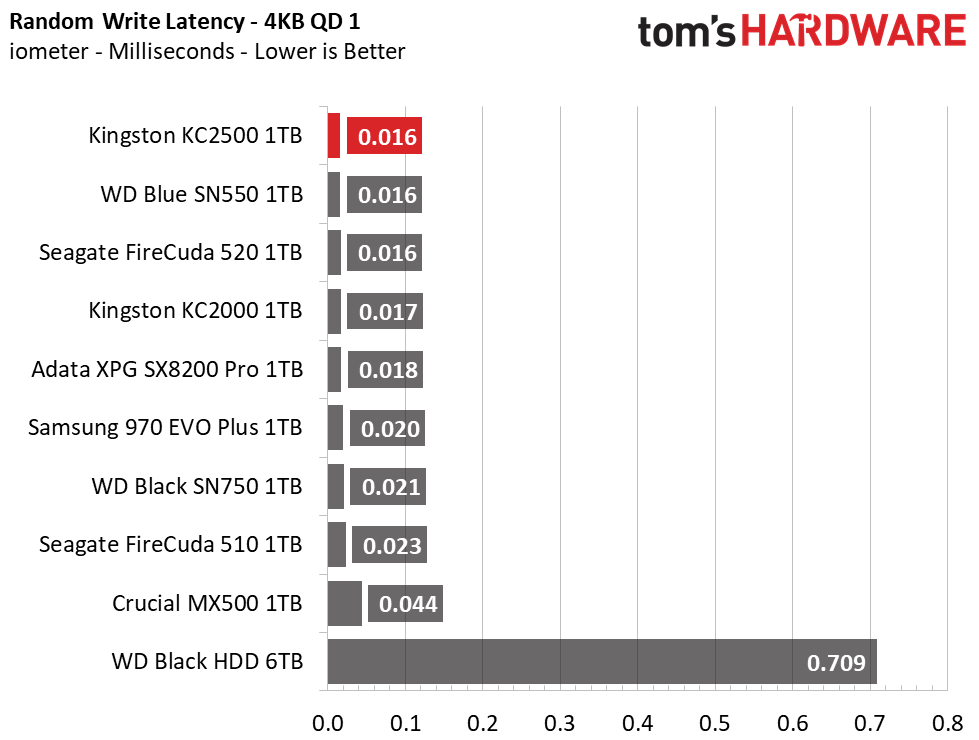



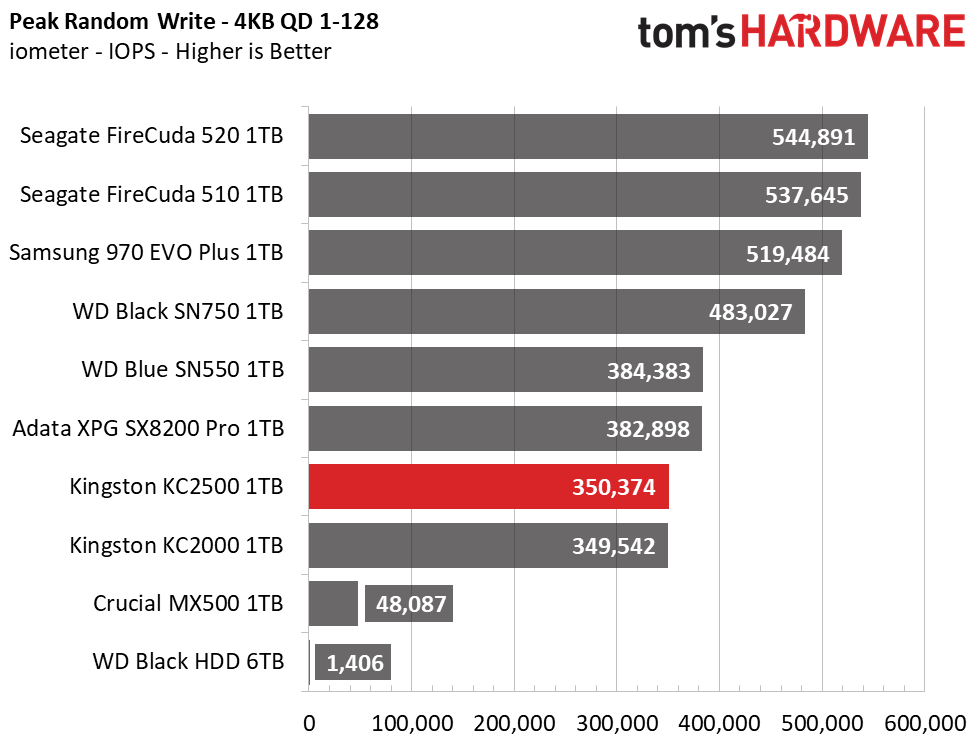
In ATTO, we tested Kingston’s KC2500 at a QD of 1, representing most day to day file access at various block sizes. Its sequential performance ramps up a little bit faster than its predecessor and overall peak speeds come in at 3.5/3.0 GBps read/write. Random read performance is just a hair less responsive than Adata’s XPG SX8200 Pro, but at a QD of 1, it can write faster, which is a contributing factor toward its win under SPECworkstation 3’s workloads. Kingston’s KC2500 is fastest where it counts, low QD and small block requests.
Sustained Write Performance and Cache Recovery
Official write specifications are only part of the performance picture. Most SSD makers implement a write cache, which is a fast area of (usually) pseudo-SLC programmed flash that absorbs incoming data. Sustained write speeds can suffer tremendously once the workload spills outside of the cache and into the "native" TLC or QLC flash. We use iometer to hammer the SSD with sequential writes for 15 minutes to measure both the size of the write cache and performance after the cache is saturated. We also monitor cache recovery via multiple idle rounds.

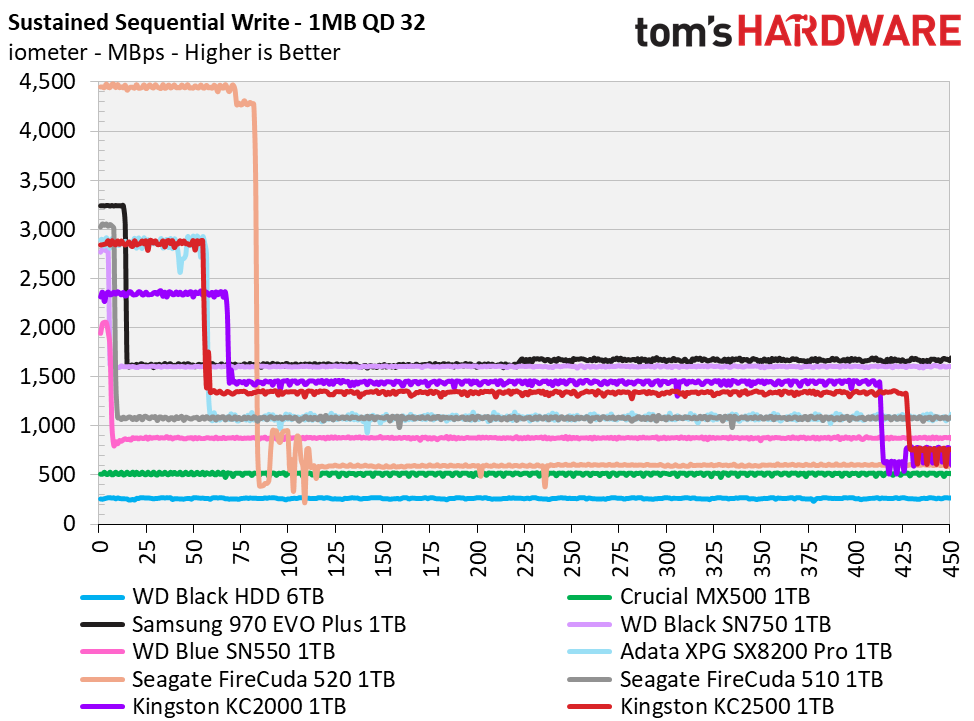
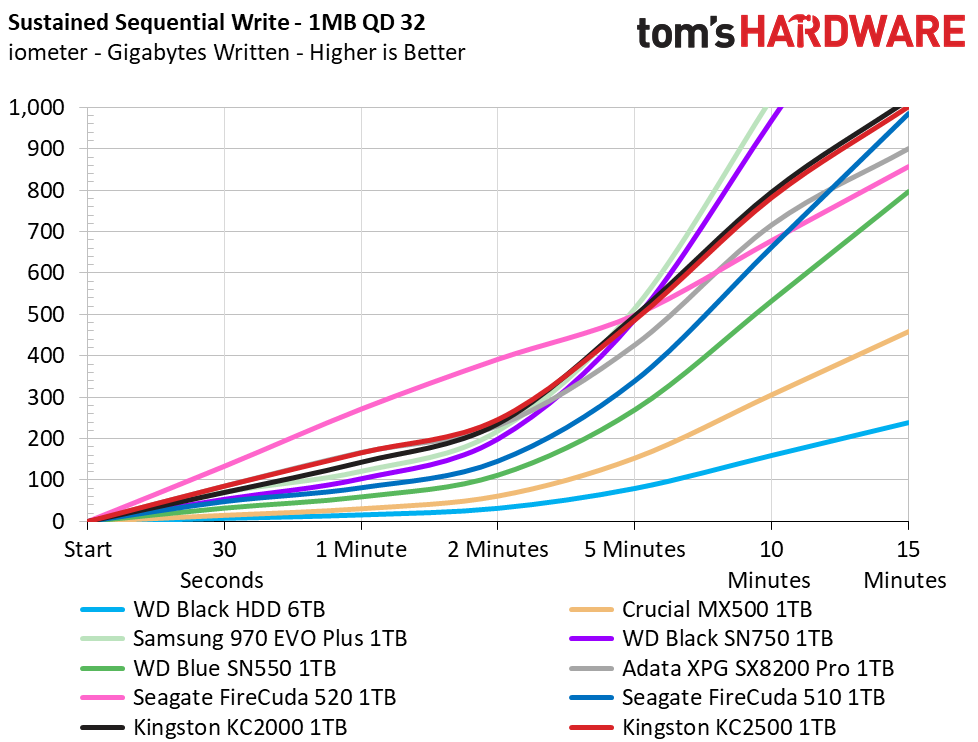
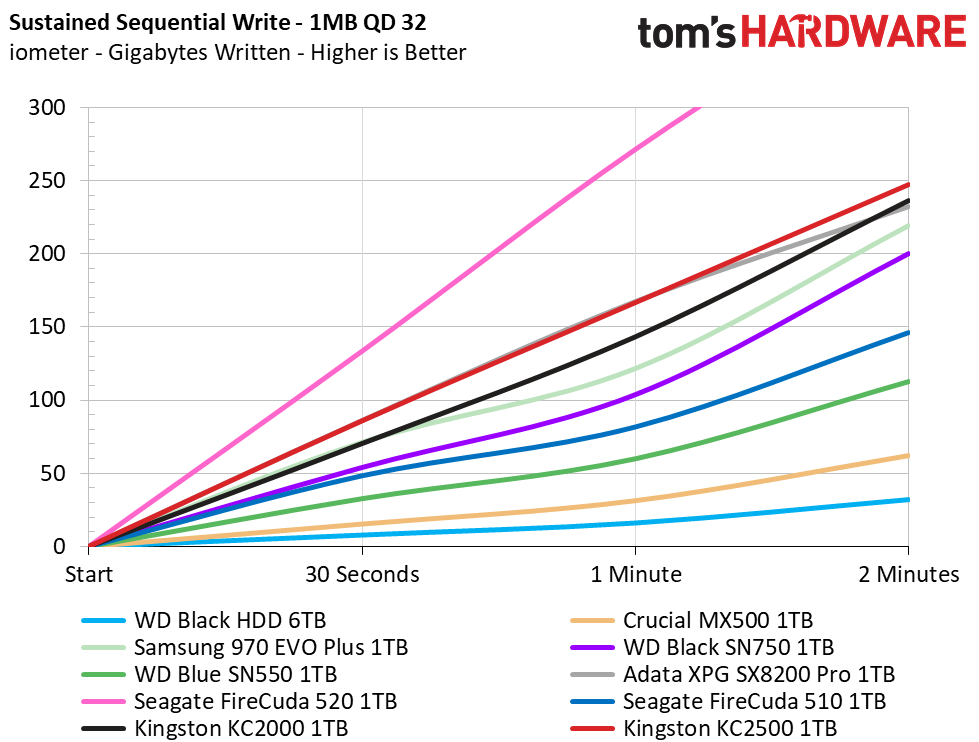

Write performance has improved in its responsiveness to light and moderate workloads. With the higher sequential throughput, the KC2500 can outperform the KC2000 up to about 660GB of writes. With the higher highs, Kingston’s KC2500 sees some slower direct-to-TLC performance once the cache fills, however. Its SLC cache measured roughly 160GB, similar to what we have seen from other SM2262EN-based SSDs.
When it comes to delivering quality of service, the KC2500 has optimized performance for the end-user experience, unlike most others. Idle time SLC cache recovery is a bit slow though. While the Silicon Motion SM2263 and Phison SSD controllers typically recover their SLC cache space rather quickly, up to 16GB per 30 seconds, the KC2500 takes a bit longer to recover in our up to 30 minutes of idle testing. In each round of idle time, ranging from 30 seconds to 30 minutes, the KC2500 recovered roughly 8GB of SLC cache space.
Power Consumption and Temperature
We use the Quarch HD Programmable Power Module to gain a deeper understanding of power characteristics. Idle power consumption is an important aspect to consider, especially if you're looking for a laptop upgrade. Some SSDs can consume watts of power at idle while better-suited ones sip just milliwatts. Average workload power consumption and max consumption are two other aspects of power consumption, but performance-per-watt is more important. A drive might consume more power during any given workload, but accomplishing a task faster allows the drive to drop into an idle state faster, which ultimately saves power.
When possible, we also log the temperature of the drive via the S.M.A.R.T. data to see when (or if) thermal throttling kicks in and how it impacts performance. Bear in mind that results will vary based on the workload and ambient air temperature.

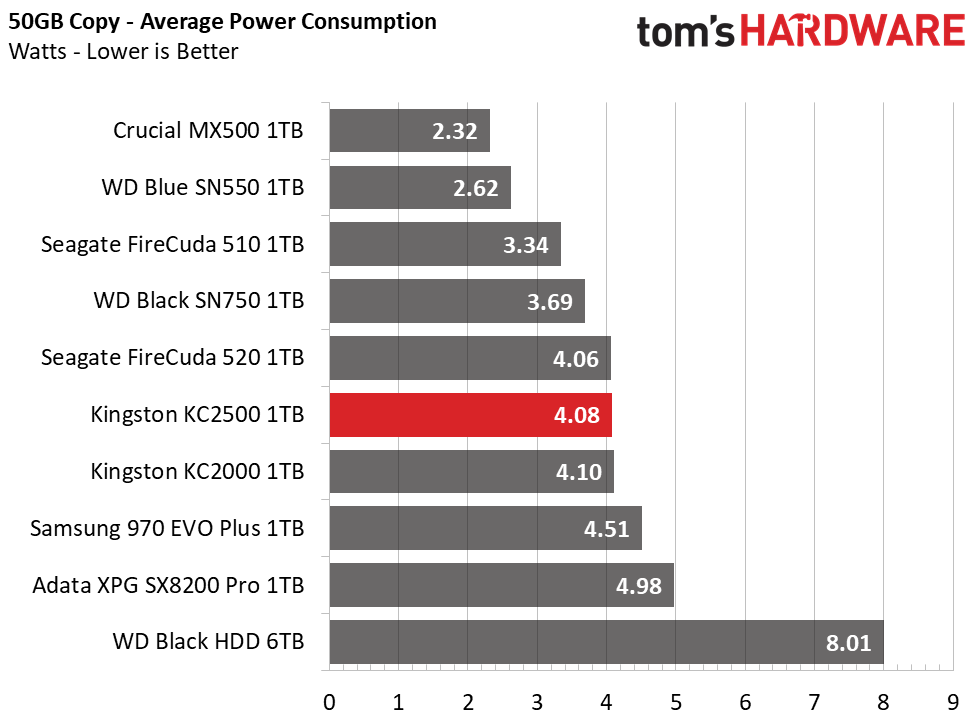
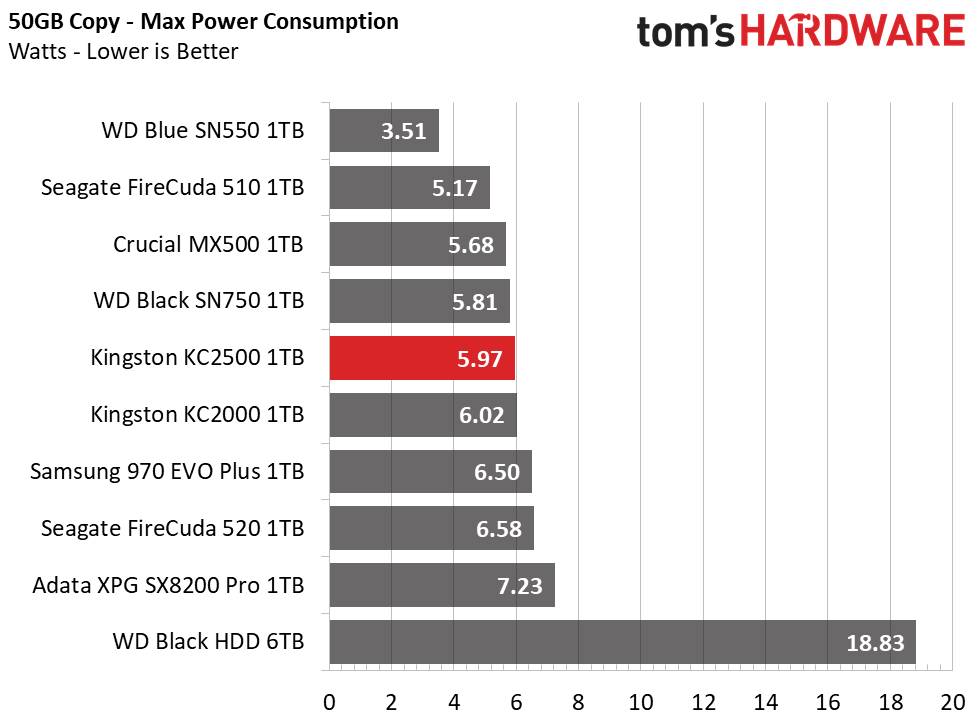
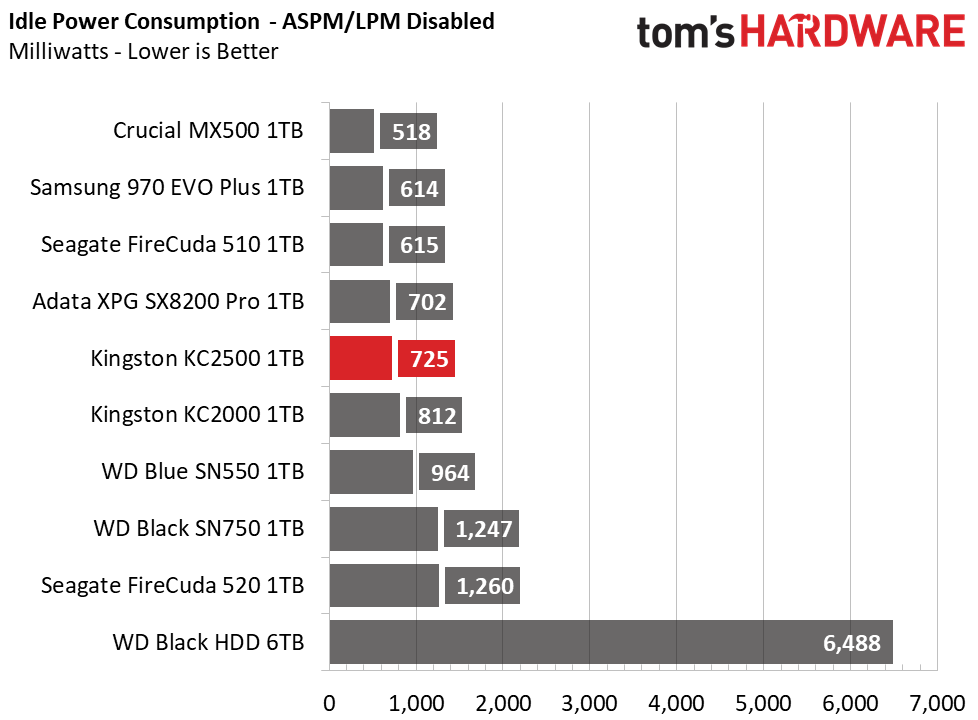

Scoring seventh place overall, Kingston’s KC2500 doesn’t land on the top of our efficiency charts. However, power consumption is well managed. Compared to Adata’s XPG SX8200 Pro and its predecessor, Kingston’s KC2500 it is more power-efficient. At Idle it even sips power, consuming just 10mW at its lowest power state when used on our desktop test bench.
Additionally, reading and writing from/to the Kingston KC2500 without any airflow did not trigger any thermal throttling with a few 100GB datasets in a 24 degrees Celsius environment. Peak temps ranged from 67-70 degrees Celsius as reported by the S.M.A.R.T. data, however when measuring the controller temperature with an IR thermometer, we read upwards of 76-79 degrees Celsius under load.
MORE: Best SSDs
MORE: How We Test HDDs And SSDs
MORE: All SSD Content

Sean is a Contributing Editor at Tom’s Hardware US, covering storage hardware.
